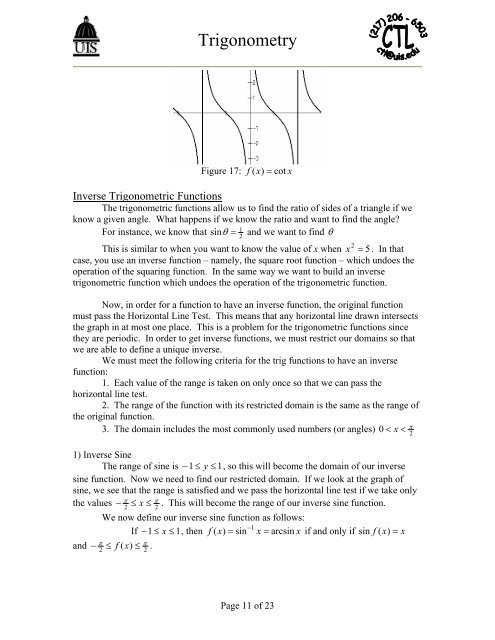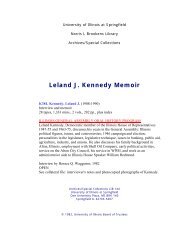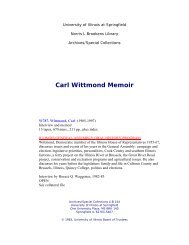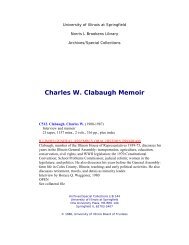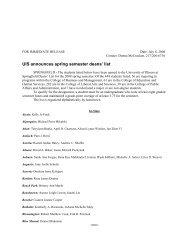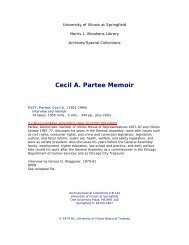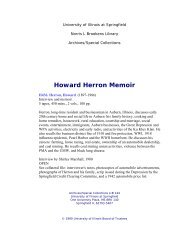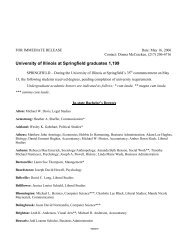Trigonometry Handout
Trigonometry Handout
Trigonometry Handout
Create successful ePaper yourself
Turn your PDF publications into a flip-book with our unique Google optimized e-Paper software.
<strong>Trigonometry</strong><br />
Figure 17:<br />
f ( x)<br />
= cot x<br />
Inverse Trigonometric Functions<br />
The trigonometric functions allow us to find the ratio of sides of a triangle if we<br />
know a given angle. What happens if we know the ratio and want to find the angle?<br />
1<br />
For instance, we know that sin θ = and we want to find θ<br />
2<br />
This is similar to when you want to know the value of x when x<br />
2 = 5 . In that<br />
case, you use an inverse function – namely, the square root function – which undoes the<br />
operation of the squaring function. In the same way we want to build an inverse<br />
trigonometric function which undoes the operation of the trigonometric function.<br />
Now, in order for a function to have an inverse function, the original function<br />
must pass the Horizontal Line Test. This means that any horizontal line drawn intersects<br />
the graph in at most one place. This is a problem for the trigonometric functions since<br />
they are periodic. In order to get inverse functions, we must restrict our domains so that<br />
we are able to define a unique inverse.<br />
We must meet the following criteria for the trig functions to have an inverse<br />
function:<br />
1. Each value of the range is taken on only once so that we can pass the<br />
horizontal line test.<br />
2. The range of the function with its restricted domain is the same as the range of<br />
the original function.<br />
π<br />
3. The domain includes the most commonly used numbers (or angles) 0 < x <<br />
2<br />
1) Inverse Sine<br />
The range of sine is −1 ≤ y ≤ 1, so this will become the domain of our inverse<br />
sine function. Now we need to find our restricted domain. If we look at the graph of<br />
sine, we see that the range is satisfied and we pass the horizontal line test if we take only<br />
π π<br />
the values − ≤ x ≤ . This will become the range of our inverse sine function.<br />
2 2<br />
We now define our inverse sine function as follows:<br />
−1<br />
If −1 ≤ x ≤ 1, then f ( x)<br />
= sin x = arcsin x if and only if sin f ( x)<br />
= x<br />
π<br />
π<br />
and − ≤ f ( x)<br />
≤ .<br />
2 2<br />
Page 11 of 23


